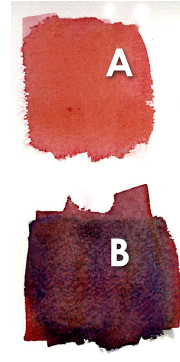Painting skin can quickly become frustrating if one goes about it without abiding by the principles discussed earlier.
Namely, by picking at the washes and describing the skin as one color.
When painting a large surface in watercolor, the washes easily become mottled or blotchy if the color is laid on too slowly, on dry paper, or with too small of a brush.
And even if the tone remains even, if the color isn’t lifelike, the painting will still appear fl at and dull.
To alleviate these problems you should do things: first of all, make sure you’re using the correct application method. In order for skin to appear smooth, you need to get the paint on the surface quickly and in large, even strokes.
So begin by drawing the face on your paper in pencil, then washing over the skin with clean water, avoiding areas that are to remain white such as eyes or teeth.
It may be a good idea to protect those areas with masking fluid before you wet the paper if you’re worried.
When the paper is wet but not dripping, apply the colors for the skin tone with a large fl at brush loaded with color, working in horizontal strokes from the top down.
You want to cover the area in as few strokes as possible. If the paper is at a slight incline, the paint will blend together even faster, but have a paper towel nearby to catch any drips.
The second thing you need to do to avoid problems is to paint with bright, vibrant color. Practicing the granulation technique is the best way to achieve this.
Granulation is the process of layering one wet wash on top of another and letting the colors mix themselves into something new.
The outcome is a color with many levels, which is especially good when painting skin, which is no one particular color, but many colors mixed together.
Look at different skin colors and you will notice that some have yellow undertones, or blue, or green, or red. This doesn’t mean that the skin is any of those colors, but rather, that you can see them in the tone.
As an example, mix up a flesh tone in your palette and paint a square of in your paper (as in A). Beside it, paint a granulated flesh tone. Begin with (as one option), a wash of cerulean blue.
While it’s still wet, layer over the top of it cobalt violet, then cadmium red, then aureolin yellow. The last color you layer will be dominant, and you’ll come up with something complex enough to capture living flesh in a painting (see B).
Make many swatches of different combinations and write the colors that you used beside each. It will be a valuable reference and time saver for your paintings.
With these simple step by step watercolor drawing lessons … you’ll be able to master water color paintings in record time. This is regardless of your previous experience.
With high definition videos and detailed PDF material on watercolor, you will have all the information you need to bring your watercolor paintings to life.



